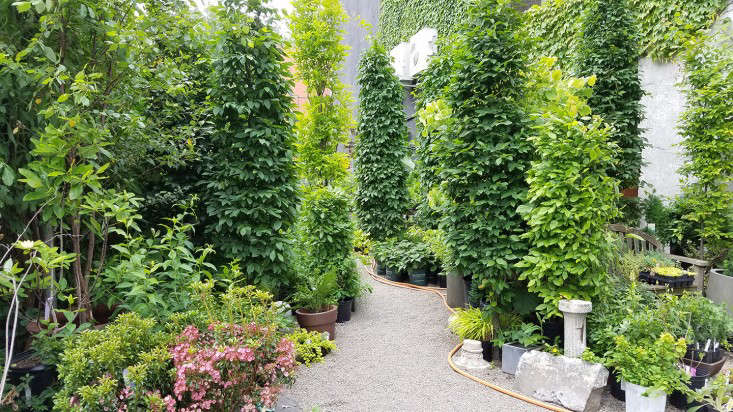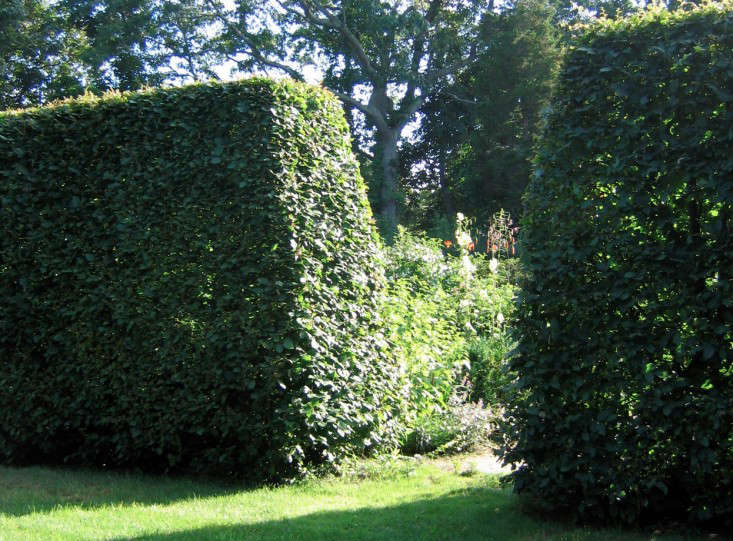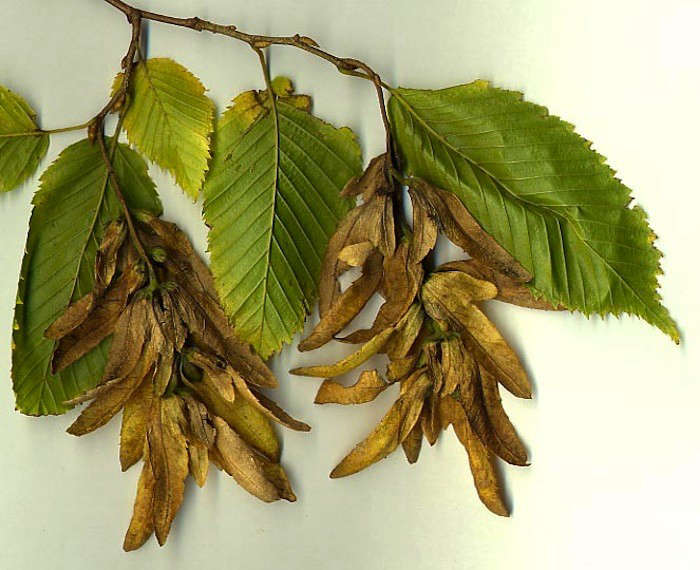Hornbeam, Carpinus: “The Hedge of Dreams”
“Build it, and they will come,” the voices told Kevin Costner in Field of Dreams, prompting him to make an entire baseball stadium from scratch on his Iowa farm. While we’d be loath to look out the window to find the Chicago Black Sox trampling the lawn, it turns out the same formula works for hornbeam: plant it, and a hedge will come. A beautiful hedge.
Hornbeam, a small hardwood tree, can grow to be 30 feet tall (or happily pruned to make a perfect border) and looks beautiful in any season. Of its dozens of species, Carpinus betulus (European hornbeam) is preferred for the narrow crown that makes its shape easily adaptable when clipped.
Above: Photograph by Marie Viljoen.
In plant classifications, the hornbeam tree is often mistaken for a shrub, though in fact, it belongs to the same family as the hazelnut tree and yields wrinkly brown nuts (that are not edible).

Cheat Sheet
- Perennial tree with gray bark
- Hardy from zones 3 to 9
- Bright green leaves turn rust-colored in winter
Keep It Alive
- Plant in early fall
- Seedlings need light shade; subsequently transplant it to partial or full sun
- Water regularly during dry seasons
Above: Photograph by by Deborah Nevins. For more, see Hedge Fun: At Home with Garden Designer Deborah Nevins.
The leaves of a hornbeam hedge, or a standalone hornbeam tree, are a bright shade of green in the spring and summer. But hornbeam is the most stunning as cold weather approaches. The leaves turn a delicate shade of rust and crisp in the autumn sun. Then, best of all, their serrated and slightly raised edges catch snowflakes so each leaf is finely enameled with white powder. With hornbeam, there is a new surprise every season always better than the last.
Above: Photograph via Wikipedia.
Growing hornbeam from seeds is an investment in the future of your garden. First, plant in 5-inch pots with two seeds per pot and cover with loamy soil mix. Layer with compost, and water when the compost feels dry.

Young hornbeam seedlings do best in partial shade outdoors. Seedlings will germinate in the spring, and after a season, can be transplanted to a brighter area of the garden (spaced 25 feet apart). It takes several years for hornbeams to grow together into a hedge, but after they do, you can prune them like a fancy English garden or leave them be for a luscious and shady border.
Read More:
Above: In winter, leaves on hornbeam shrubs turn a beautiful rusty color. Photograph by Maria Dremo Sundström via Almbacken. For more of this project, see Garden Visit at Home with Maria Dremo Sundström in Sweden.
N.B.: See more ideas for hedges and shrubs in Garden Design 101:
















Have a Question or Comment About This Post?
Join the conversation (4)